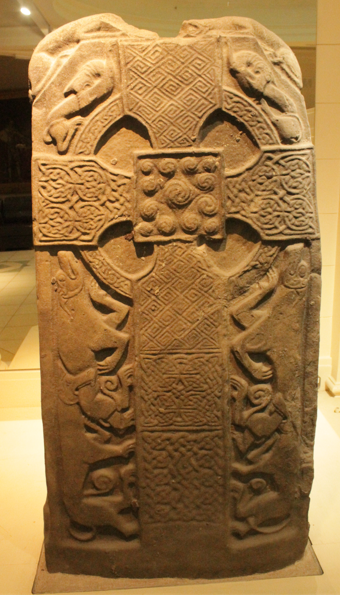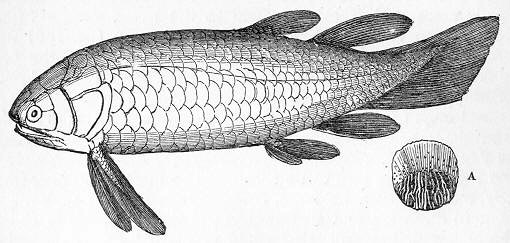James Noble (geologist) on:
[Wikipedia]
[Google]
[Amazon]
James Noble (1800–1848) was a 19th century Scottish minister, antiquarian, geologist and fossil collector.
In relation to his fossil hunting,

 He was born in New Deer in
He was born in New Deer in
Hugh Miller
Hugh Miller (10 October 1802 – 23/24 December 1856) was a self-taught Scottish geologist and writer, folklorist and an evangelical Christian.
Life and work
Miller was born in Cromarty, the first of three children of Harriet Wright (''b ...
called him " a gentleman who, by devoting his leisure hours to geology
Geology () is a branch of natural science concerned with Earth and other astronomical objects, the features or rocks of which it is composed, and the processes by which they change over time. Modern geology significantly overlaps all other Ear ...
, has extended the knowledge of this upper formation, and whose name has been attached by Agassiz
Jean Louis Rodolphe Agassiz ( ; ) FRS (For) FRSE (May 28, 1807 – December 14, 1873) was a Swiss-born American biologist and geologist who is recognized as a scholar of Earth's natural history.
Spending his early life in Switzerland, he rec ...
to its characteristic fossil, now designated as Holoptychus Nobilissimus".
Life

 He was born in New Deer in
He was born in New Deer in Aberdeenshire
Aberdeenshire ( sco, Aiberdeenshire; gd, Siorrachd Obar Dheathain) is one of the 32 Subdivisions of Scotland#council areas of Scotland, council areas of Scotland.
It takes its name from the County of Aberdeen which has substantially differe ...
the son of Charles Noble. He was educated locally then studied at Aberdeen University where he graduated MA in 1818. In March 1822 he was licensed to preach as a Church of Scotland
The Church of Scotland ( sco, The Kirk o Scotland; gd, Eaglais na h-Alba) is the national church in Scotland.
The Church of Scotland was principally shaped by John Knox, in the Scottish Reformation, Reformation of 1560, when it split from t ...
minister by the Presbytery of Deer.
In December 1828 he was ordained as minister of St Madoes
St. Madoes () is a village in the Carse of Gowrie, Scotland. It was developed near Pitfour Castle. It is believed that there have been settlements since around 1000 C.E based on discoveries of several standing stones and the St. Madoes stone, a w ...
under patronage of John Richardson of Pitfour. Exploring the churchyard of St Madoes his eye was drawn to a curious fallen stone. He communicated with the Royal Society of Edinburgh
The Royal Society of Edinburgh is Scotland's national academy of science and letters. It is a registered charity that operates on a wholly independent and non-partisan basis and provides public benefit throughout Scotland. It was established i ...
who sent their museum curator, James Skene
James Skene of Rubislaw (1775–1864) was a Scottish lawyer and amateur artist, best known as a friend of Sir Walter Scott.
Life
The second son of George Skene (1736–1776) of Rubislaw, Aberdeen and his wife Jane (Jean) Moir of Stoneywood, h ...
to investigate and Skene presented a paper to the RSE on this Pictish stone in 1830.
A friend or acquaintance of Hugh Miller
Hugh Miller (10 October 1802 – 23/24 December 1856) was a self-taught Scottish geologist and writer, folklorist and an evangelical Christian.
Life and work
Miller was born in Cromarty, the first of three children of Harriet Wright (''b ...
, Miller stated to the RSE that Rev James Noble had discovered, while fossil hunting in 1838/9, "an almost entire specimen of Gyrolepis
''Gyrolepis'' is an extinct genus of prehistoric ray-finned fish from the Middle-Late Triassic epochs in what is now Europe. It is known both from complete specimens and isolated skeletal elements, such as scales or teeth.
See also
* Prehist ...
" ( a large carnivorous fish from the Triassic period) in the layered sandstones of Clashbenny quarry serving Clashbenny Farm. Noble corresponded with Hugh Miller and Agassiz on his discovery and the latter named this new species in honour of Noble in 1839. A favourite spot, he also recorded the Clashbenny Standing Stone which is now a Scheduled Ancient Monument.
In 1839 he discovered a new sub-species of Barley (of the "Dunlop" variety) and over three years bred this to a quantity capable of commercial use, and was first used commercially by James Rannie of Inchyra House.
In 1843 he attended the Synod of Perth and Stirling.
Rev Noble died in St Madoes manse on 4 December 1848 and was buried in the adjacent churchyard, close to his beloved Pictish stone. He was succeeded by Rev John Ross MacDuff.
The St Madoes Stone
Only after Noble's death was the stone set upright (as was believed its correct position) being placed on a foundation in its original location in 1853 by a T S Muir. It was moved to a position close to the church entrance in the 1920s and moved to its current location in Perth Museum in the 1990s.Family
In October 1829 he married Margaret Crow (d. 1884) eldest daughter of James Crow. They had several children: *Marjory Baillie Noble (1830-1922) *Barbara Ann Noble (b. 1833) *Rev James Noble (b. 1835), minister of Castleton, Angus *Charlotte Crawford Noble (1837-1915) *Susan Crow Noble (1841-1890) married Rev James Patterson (1840-1906) minister ofAncrum
Ancrum ( gd, Alan Crom) is a village in the Borders area of Scotland, 5 km north west of Jedburgh.
The village — which currently has a population of around 300 — is situated just off the A68 trunk road on the B6400 which runs through A ...
''Fasti Ecclesiae Scoticanae''; vol. 2; by Hew Scott
Publications
*On a New Variety of Barley (1838 paper to the Highland Society) *The Old Red Sandstone *Statistical Account of the Parish of St Madoes (1845)References
{{DEFAULTSORT:Noble, James 1800 births 1848 deaths People from New Deer Alumni of the University of Aberdeen Scottish geologists Scottish antiquarians Scottish palaeontologists